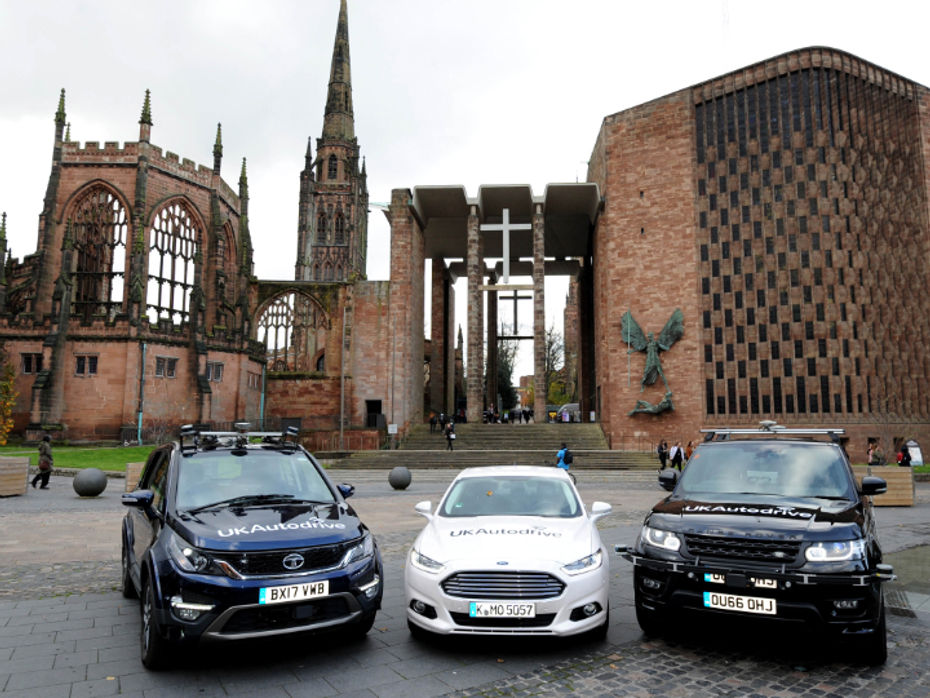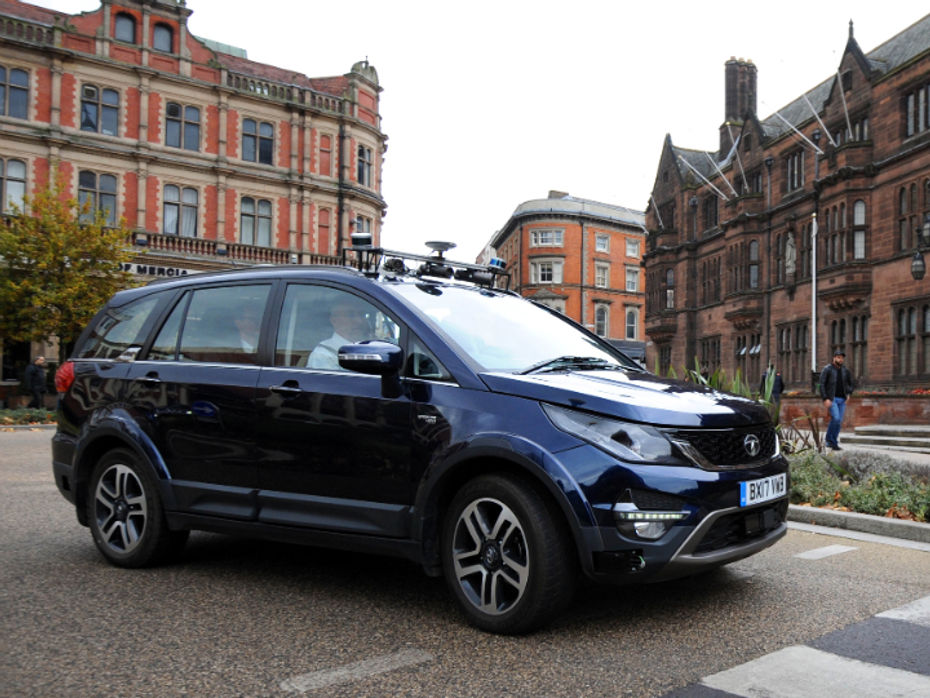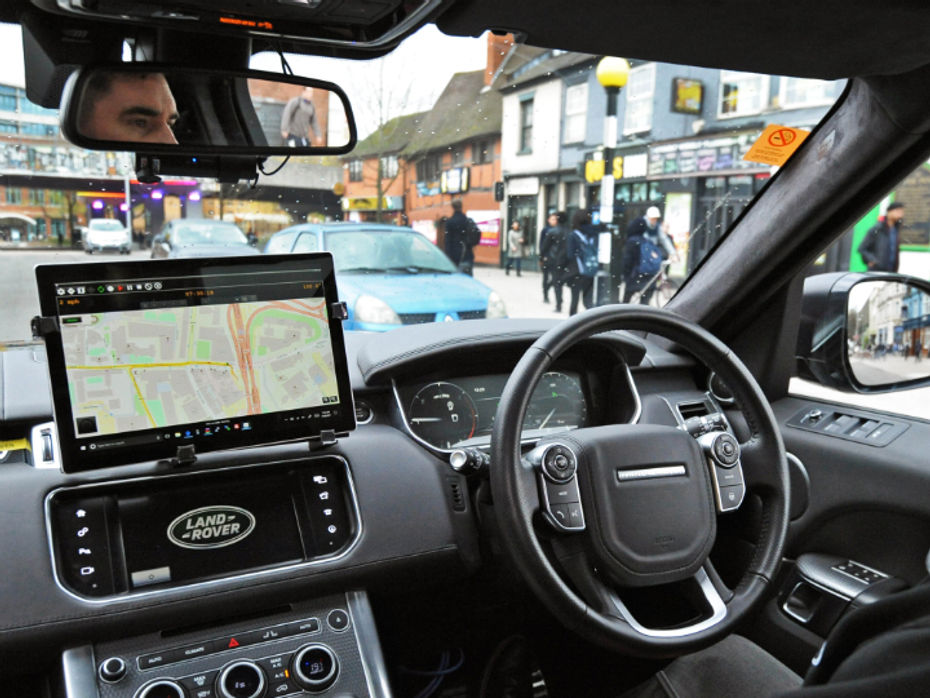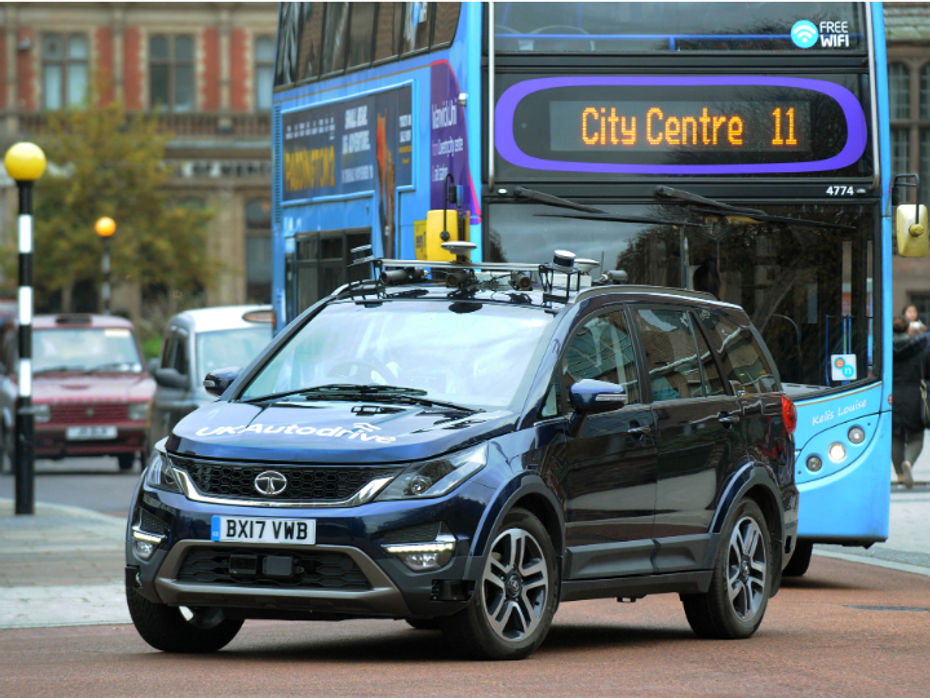
Suzuki-Toyota Join Hands To Introduce EVs In India By 2020
- Nov 17, 2017
- Views : 13260


We are still some way from connected and autonomous driving technologies playing a pervasive role in our lives. Still, that future isn’t too far as the United Kingdom witnessed its largest trial of connected and autonomous vehicle technology being tested on the streets of Coventry, which is referred to by many as the birthplace of the motor car.
The project has been tagged as ‘UK Autodrive’ and its main participants include Jaguar Land Rover (JLR), Ford and Tata Motors European Technical Centre (TMETC). Four cars are part of the testing group - a Hexa from Tata Motors, an F-Pace and a Range Rover Sport from JLR, and a Mondeo from Ford. The connected car trials are exploring the benefits of vehicles that can communicate to each other and their surroundings as well.

The companies have collaboratively begun trials of some of the features which fall under the wider scope of autonomous and connected car technologies. These include:
Emergency Vehicle Warning (EVW): All emergency vehicles, including ambulances, fire engines and police vehicles will send a signal directly to other connected vehicles, notifying that they are approaching at speed. It will advise to make way for them.
Intersection Collision Warning (ICW): This system warns the driver when it is unsafe to enter an intersection because of the higher probability of a collision.

In-Vehicle Signage (IVS): It harnesses information from the connected services and feeds in information about the road closures, congestion and other incidents directly to the car’s onboard display.
Electronic Emergency Brake Light (EEBL): It alerts the driver if a vehicle in front suddenly applies the brakes, especially in conditions when the driver is unable to see that vehicle due to traffic, road layout or weather conditions.
Green Light Optimal Speed Advisory (GLOSA): This system sends traffic light information to the connected car, which is able to calculate the optimal speed for approaching the lights, potentially minimising the number of red light stops, improving traffic flow and reducing emission levels from idling vehicles.

Intersection Priority Management (IPM): It assigns priority when two or more connected vehicles approach an intersection without priority signs or traffic lights.
Collaborative Parking: It provides real-time information about free parking spaces either in close proximity or near the driver’s final destination.
The JLR and TMETC automotive vehicle research technology trials have been devised to develop self-driving cars in a real-world setting. However, trained professionals are always supervising the cars all the time.

Further trials are scheduled to take place in Coventry and Milton Keynes early next year, followed by a final series of open road demonstration events in both cities during the second half of 2018. This development will surely boost the country’s top officials as the United Kingdom, which is battling the Brexit fever, aims to launch self driving cars by 2021.

Suzuki-Toyota Join Hands To Introduce EVs In India By 2020

Surprise, Surprise! New Tesla Roadster Revealed

Jaguar F-Pace Local Assembly Starts; Prices Go Down

Mahindra e2oPlus Now Available For Rent On Zoomcar

2019 Tata Hexa Launched With Feature And Cosmetic Updates

Tata Hexa XM+ Variant Launched At Rs 15.27 Lakh

Tata Motors Offers Delicious Year-End Discounts

Tata Hexa Downtown Edition Launched

Tata Hexa Downtown Urban Edition Coming Soon

Tata Hexa: 5 Things It Does Better Than The Competition
India's largest automotive community
 No More Diesel-iMT Powertrain In India, As Kia Discontinues It For The Sonet, Seltos And Carens
No More Diesel-iMT Powertrain In India, As Kia Discontinues It For The Sonet, Seltos And Carens
 Hyundai Creta Electric: Things You Get With Each Of Its 5 Variants
Hyundai Creta Electric: Things You Get With Each Of Its 5 Variants
 Here Are Some Adrenaline Pumping Experiences From Auto Expo 2025 That You Should Not Miss!
Here Are Some Adrenaline Pumping Experiences From Auto Expo 2025 That You Should Not Miss!
 All You Need To Know About The Surprise Element At Auto Expo 2025: BMW iX1 LWB
All You Need To Know About The Surprise Element At Auto Expo 2025: BMW iX1 LWB
 Tata Punch
Rs. 5.99 Lakh
Tata Punch
Rs. 5.99 Lakh
 Tata Nexon
Rs. 7.99 Lakh
Tata Nexon
Rs. 7.99 Lakh
 Tata Curvv
Rs. 9.99 Lakh
Tata Curvv
Rs. 9.99 Lakh
 Tata Harrier
Rs. 14.99 Lakh
Tata Harrier
Rs. 14.99 Lakh
 Tata Tiago
Rs. 4.99 Lakh
Tata Tiago
Rs. 4.99 Lakh
 Hyundai Creta
Rs. 11.10 Lakh
Hyundai Creta
Rs. 11.10 Lakh
 Tata Punch
Rs. 5.99 Lakh
Tata Punch
Rs. 5.99 Lakh
 Mahindra Thar ROXX
Rs. 12.99 Lakh
Mahindra Thar ROXX
Rs. 12.99 Lakh
 Tata Nexon
Rs. 7.99 Lakh
Tata Nexon
Rs. 7.99 Lakh
 Mahindra XUV700
Rs. 13.99 Lakh
Mahindra XUV700
Rs. 13.99 Lakh